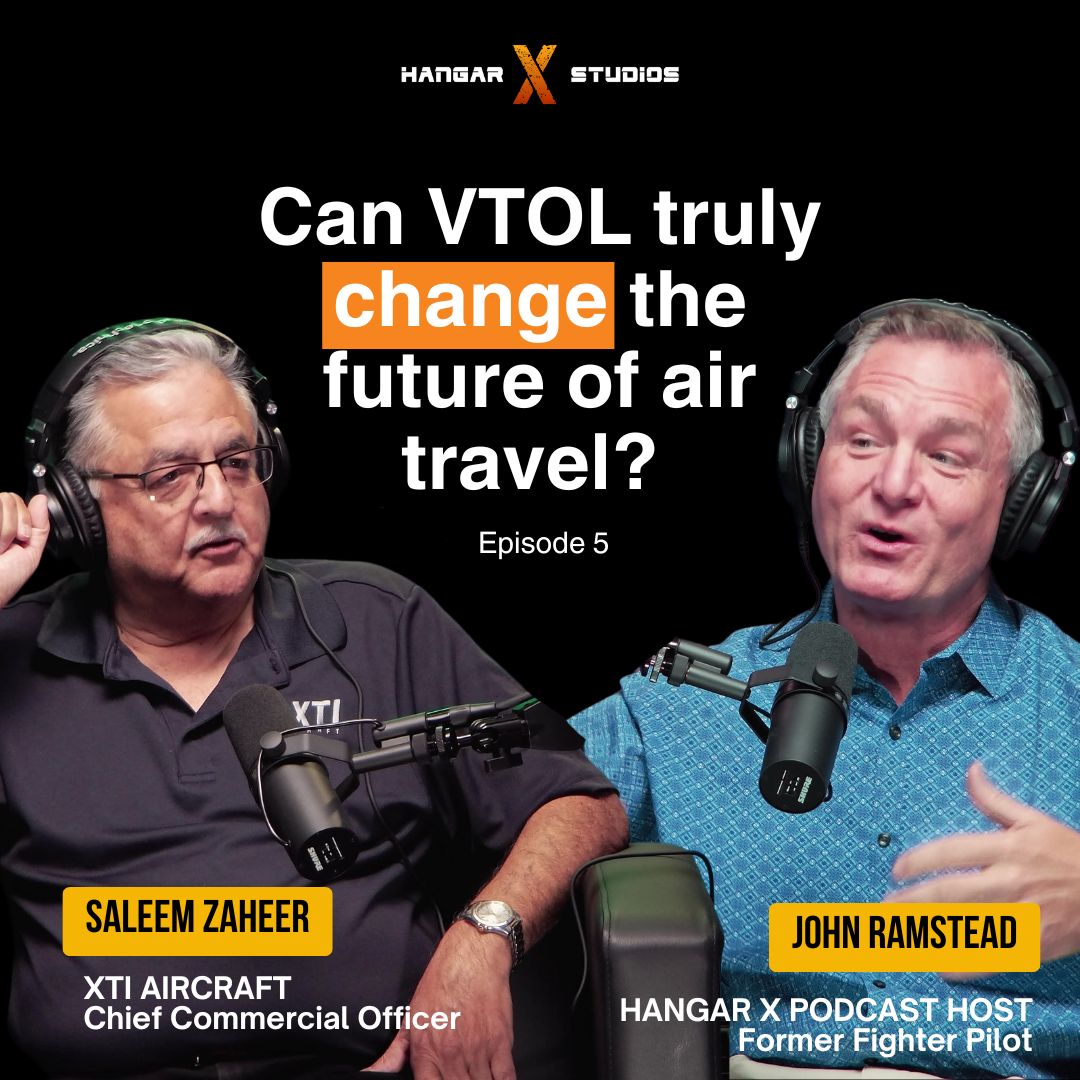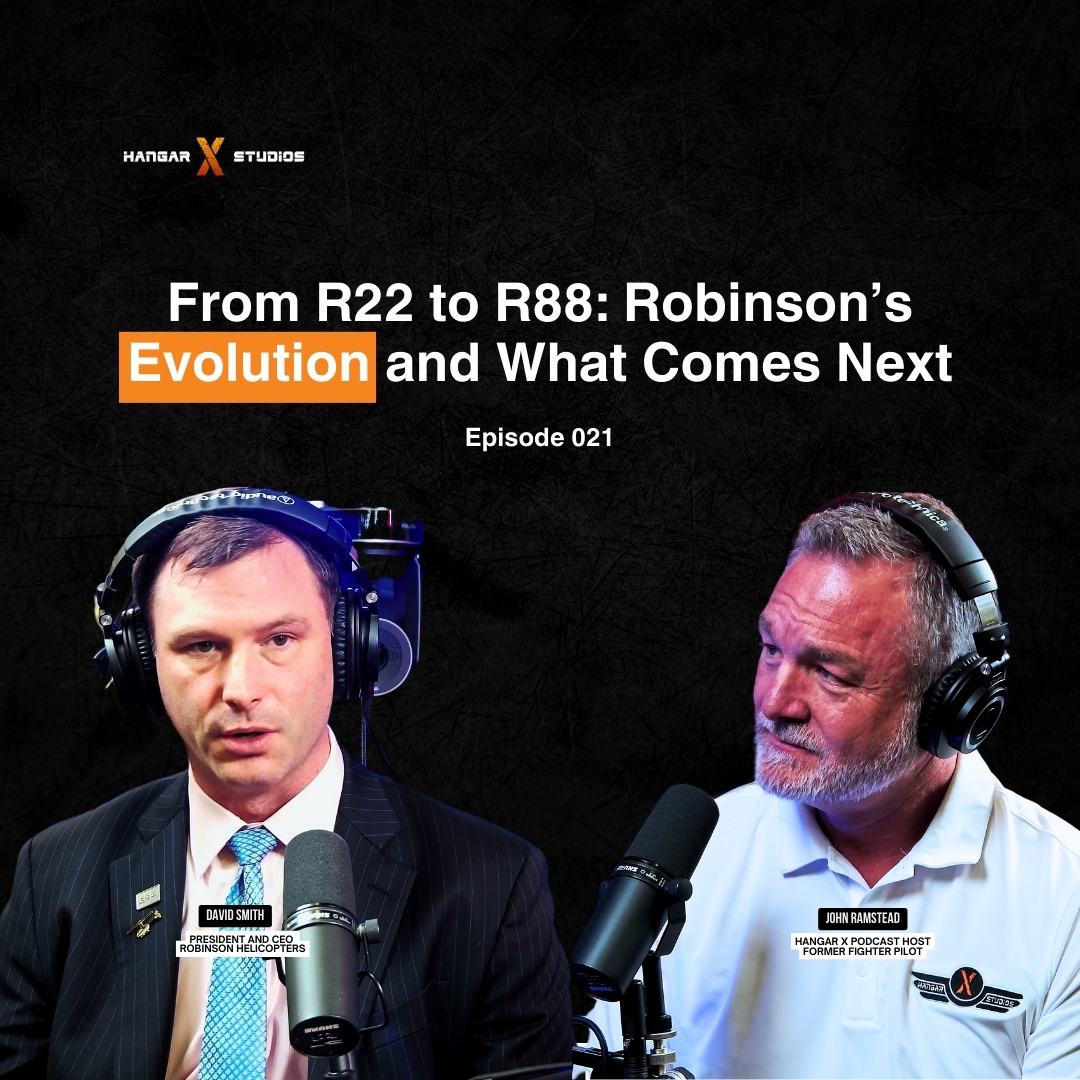Episode Transcript
[00:00:00] Speaker A: I just finished sitting down with David Oppenheimer, an incredible background science, technology business, and we talked about freeing up emerging technologies, how to get through the valley of death, and the application of that to the aerospace industry. You're going to love this interview and stay tuned.
[00:00:18] Speaker B: Welcome to Hangar X Studios, where former fighter pilot and host John Ramstead takes us on a journey across aerospace as it enters an historic period of innovation and transformation.
Our guests include aviation experts, pilots, financiers, military leaders, and innovators of all types.
Buckle up for another episode of Hangar X.
[00:00:48] Speaker A: I'm looking forward to a conversation today with David Oppenheimer. David, welcome to the Hanger X podcast.
[00:00:53] Speaker C: Well, thank you. And thank you so much for having me.
[00:00:56] Speaker A: Well, I'm excited you're here, and you have such a fascinating background. Before we dive into the topic today, I'd love to hear a little bit more about your career and your career path. It was great to hear some of the details earlier when we were talking.
[00:01:08] Speaker C: Well, I think we could go way, way back when dinosaurs walked around.
I started at NASA Ames as an intern in 1976.
My father was a scientist at Lockheed across the way out there in Sunnyvale. And the technology course just bit me straight up. So watching all of the different experiments going on there continued down that path. Worked with a lot of the big corporations, Hewlett Packard and so on growing up. But in 1993, decided to take a chance and become a consultant and do things on my own, both from a business practices point of view as well as a technology point of view. But that really transitioned in 2000 when I really went back to a passion, and that was about emerging technology and bringing that forward.
And so I spent the bulk of the time since 2000 working with emerging technology companies.
And that eventually led me to become an advisor for the congressman who was the chair of the House science committee at that time, working on a variety of technology issues around the world.
[00:02:33] Speaker A: What was it about emerging technologies that just piqued your passion so much?
[00:02:39] Speaker C: Well, it's all about, what I like about emerging technologies is the concept of asymmetric advantage, the idea that a new disruption of technology can change the path and change the outcome of whatever field you're looking for, whether it's medical, military, civil, it doesn't matter. It matters that your efficiency changes in such a dimension that you leave behind the past.
That's where I really focused and then focusing on the problems that emerging technologies.
[00:03:16] Speaker A: Have in themselves and bringing it to the market or the problems that they solve, or both, both.
[00:03:23] Speaker C: A lot of times, access to the proper laboratories and so on are impediments for advancing technology.
But once the technology is actually matured to what we call a technology readiness level of three or so, on a scale of one to nine, another phenomena happens. And that is what we call the valley of death.
Companies have a technology that's functional. It has not necessarily been transitioned into an application that's recognizable, and it becomes very, very difficult for them to finance themselves.
They are too early for venture. They are too early for a lot of different types of investors. And yet the technology not only has promised it's real, and what I've observed over the years in working with the government on these problems is that the value of the technology does not drive its success.
Crossing the valley of death is what it's about. If you run out of money, you're done. It doesn't mean that the best technology gets to the field. It means that the best technology might never have made it to the field.
And that's where working with emerging technology organizations and companies and inventors, all the way from universities to federal labs, is a passion, because you can't change the world if you can't get the solution out there. True.
[00:05:05] Speaker A: And one of the themes of your entire career and just getting to know you the way you think, it's about identifying needs and opportunities in the market, because if you can map that technology, it's one of the ways to get through that valley of death. But you think about it uniquely, and I'd love for you to just share some of your thoughts on how you look at market needs and opportunities in the context of emerging technology.
[00:05:29] Speaker C: So to set it correctly, first of all, technology to me, isn't for technology's sake. It is to solve a known, understood problem and what in the government would be called a gap in capabilities. So you first have to understand what gaps exist, and you have to understand problem sets that the world faces.
And a what if I could change those technologies that are implemented in there in such a way that it opens up new opportunities?
That's the real nut of how you deploy a technology.
[00:06:17] Speaker A: Yeah. Could you share some examples of maybe finding some of those needs and some of these technologies that you found and how you walk them through the other side of the valley?
[00:06:28] Speaker C: Sure.
We can go back to some of the early days in microsats.
The belief system in microsatellites was that they were an amusement. They would never be able to do the things that we now know they can do.
And working with organizations that fostered early innovation in satellite technology and getting the financial community to finally recognize that these were viable.
One of the stories that I have is I was chairing a meeting at NASA Ames on microsats probably 25 years ago, and the venture capitalist that I was interviewing was saying, well, they're just not sexy.
And the answer is, but the most important things in life that give you life don't seem to be sexy. Waking up in a ICU and looking at what equipment is in there and realizing that the sexiest thing is waking up in ICU.
[00:07:47] Speaker A: So, you know, through your career, you've also had a lot of passion around aviation. And let's talk about aviation, and also, what attracted you to XTI aerospace?
[00:07:58] Speaker C: Well, early on, going back to NASA Ames, when I was an intern for a summer, I would go eat my lunch in the cockpit of a learjet or something of that sort. Of course, they didn't catch me.
But always watch the u two s taken off in the morning.
Watching the Orion's p three s come in in the evening, it was in my blood.
[00:08:29] Speaker A: And watching you two take off is fascinating because they got training wheels on.
[00:08:33] Speaker C: That fall off, and they get up to contrail flight in 30 seconds.
Amazing aircraft.
[00:08:42] Speaker A: Yep.
[00:08:44] Speaker C: So that was certainly a beginning. My father says I always loved him.
The next major component was working with helicopters. So some 15 years ago into Los Angeles area and recognizing what a transitional model transportation could be if you could do vertical lift inside that environment, because you have more flight days there than anywhere in the world, and travel is very, very difficult. And it really triggered something about vertical lift in particular.
[00:09:33] Speaker A: And then tie that into what attracted you to XTi aerospace.
[00:09:38] Speaker C: Well, again, it's the world of what can be right now. Helicopters have very limited speed, they have limited range.
And when you can change those two factors significantly, it is an asymmetric shift in what you can do. And now, if you present to planners and operators a what if that says, if you could do these things, how would that impact your business? How would it impact the people and the services you're trying to provide?
[00:10:19] Speaker A: How would it impact the city? Right.
[00:10:21] Speaker C: Yep. How it would impact the cities.
It's not a small thing at all. It's a very, very significant shift, and that is absolutely what's drawn me towards XTI.
[00:10:33] Speaker A: All right, David, before we hit record, you and I were talking and you said what attracted you to XTI aircraft? When you looked at the technology and you looked at the future of aerospace in this vertical, that this was a game changer?
[00:10:46] Speaker C: Yes, absolutely.
[00:10:46] Speaker A: You said game changer. What did you mean?
[00:10:49] Speaker C: By that, what I mean is that how transportation works today is based on limitations. And when you take away specific limitations, you enable a completely different modality for the people it serves and the function it, it executes. We can talk about FEMA and we talk about the disasters in the southeast this week.
How you get resources in can completely be altered by a craft that has this kind of velocity and range and can do vertical lift and vertical drop. And that is something that right now, because of the breadth of the disaster, they're grappling with how to get fuel and mechanisms in to get the vertical lift capability. They do have to function in such an environment.
[00:11:52] Speaker A: Yeah. And you think of the limited range and payload of a helicopter, and they're being dual tasked for logistics, support, supplies and search and rescue. And they're ideally suited for search and rescue. So what if there was something else that could do everything other than search and rescue and free all those helicopters up to save lives?
[00:12:11] Speaker C: That would be fantastic.
[00:12:13] Speaker A: If it was in place today, it would be a game changer.
[00:12:16] Speaker C: It would absolutely change how we deploy, how we prepare.
The entire lifecycle of that function would be impacted by TxtI technology.
[00:12:30] Speaker A: Absolutely. And David, I know we're going to be bringing you back on. This was just a kind of a, just getting started to know you, but there's so many other topics I really want to dig in and hear your expertise and kind of your prognostication on. And I'm excited about our next conversation.
[00:12:47] Speaker C: I look forward to it. Thank you so much.
[00:12:49] Speaker A: Absolutely. Thanks, David.


